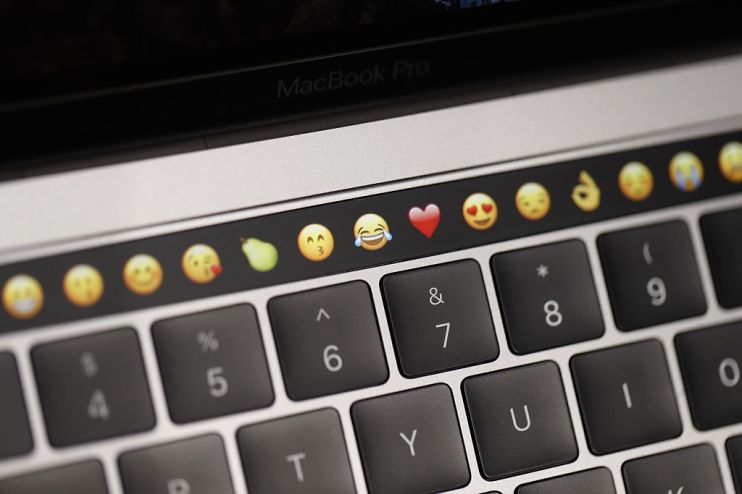Why conservationists are calling for more mushroom emojis

“Problematic,” is how a team of biologists from the University of Milan described the apparently pitiful number of animal and plant emojis currently available for use. The number of animal icons has in fact doubled since 2015. But it is still not ambitious enough, according to this bunch of conservationists.
It may sound extreme but these researchers were deeply peeved by the discrepancy between species representation. For example, there are multiple emojis of bears but just one bald eagle emoji.
Vertebrates, they point out, are overrepresented whilst arthropods are underrepresented. Annelids were not represented at all until 2020 when users were treated to the addition of a generic worm. Yet there are still no emojis to represent round or flatworms.
The biologists believe a more varied selection of plants and animals could improve discourse around biodiversity and conservation. But how could new shrooms come into being?
Our emoji overlords: the ‘unsexy’ emoji subcommittee of the Unicode Consortium
Change was (and is) affected through a mythical organisation known as the Unicode Consortium. This little-known California-based non-profit comprises an elusive emoji subcommittee which is responsible for deciding and releasing new emojis that will then update on phone users’ emoji keyboards. Their aim is to make emoji and text legible and accessible for everyone regardless of phone model or location.
Anyone can join Unicode if you’re up for paying 50 grand a year. Full voting members are Adobe, Airbnb, Amazon, Apple, Google, Meta, Microsoft and Netflix. Currently there are just the two supporting voting members: Bangladesh Computer Council and Tamil Nadu’s Tamil Virtual Academy.
The emoji-specific subcommittee, which is volunteer-run, is chaired by an employee of Google, Jennifer Daniel, and vice-chaired by a representative of Apple. “It’s not sexy,” she told MIT Technology Review in 2021. “There’s a lot of paperwork. A lot of meetings. We meet twice a week.”
The subcommittee does not propose new emojis itself but rather takes suggestions. Anyone can suggest one, but you have to make an argument for it (the form is pretty damn complicated, which may explain why the emoji overlords only receive around 100 proposals a year).
One politically-minded City A.M. reader proposed a “cut the red tape” emoji. But alas… Yet there is a way.
Daniel is keen to emphasise that it’s not just Big Tech and big spenders dictating our emoji keyboard. “It’s important for people to understand that we’re not inventing language, that it’s really the people who craft it and are inventive,” she said. Daniel meets with gesture linguists, botanical gardens, cardiovascular surgeons and whale experts in order to get each new emoji just right. It can take two years for an emoji to be developed.
How did we get here?
In the beginning, there was the word. Or… was there the emoji? Perhaps it was an ensemble of emojis of a proffering hand and the earth, or maybe it was the spark-and-bang emoji. There is no God emoji, unless you have a looser interpretation of god than man-or-woman-in-sky-sporting-white-toga. But if there was, one thing’s for sure: people would fight about it.
Ever since their development from the humble emoticon – allegedly invented in the 80s by an American professor overseeing a web chatboard who proposed the 🙂 and 🙁 to demarcate jokes from non-jokes – emojis have been fraught with political tension.
After all: in the case of a god emoji, which god would be represented? The Abrahamic god, in a Westernised filter with pale skin and brushed brown hair? Shiva the pan-Hindu deity and omniscient yogi Destroyer who has four arms and a third eye? Zeus, with a lightning bolt? Gaia? The god of capitalism?
There is no God emoji, unless you have a looser interpretation of god than man-or-woman-in-sky-sporting-white-toga. But if there was, one thing’s for sure: people would fight about it.
There are glaring gaps in the emoji keyboard. A limited poll conducted of City A.M. readers revealed a yearning for an emoji for bad hair, one for beetroot and an emoji showing a blocked loo. It also demonstrated a hankering for a more varied selection of cheese emojis, a sad dog emoji, a thief emoji and a big-spot-on-nose emoji. One reader requested an emoji for ‘cringe’; another for a capybara. One politically-minded voice suggested a “cut the red tape” emoji. But alas.
Yet there is a way. Emojis were once monotoned, with no racial options. But in 2015 five emoji skin modifiers appeared, liberating emoji-users from eternal jaundice. Emojis were once heavily gendered, with doctors and rock climbers represented as male. Sassy emojis and hair flicking emojis were female. But since 2019 all profession-emojis come with female, male and non-binary options.
In other words, these tiny pictures have taken on an incredible political meaning and, with their 3,600 pictograms, are practically a language of their own.
Does the language you speak affect the way you think?
Most linguists think no. It’s more likely that your culture affects your language. So whilst hyperbolists might like to point to crazy factoids like “there’s no Russian word for privacy” as divulging some insane truth about Russian lifestyles, this is in fact the inverse: the way you think affects your language, rather than language limiting your experience. Just think of Newspeak in George Orwell’s 1984, a language created by the state to prevent ‘thoughtcrime’ by making such thoughts linguistically impossible. Spoiler: it doesn’t work.
But that doesn’t mean the suggestion of incorporating more mushroom emojis is a stupid one. Language reflects culture. A more varied flora and fauna decorating our text speak would be a visual representation of the importance our society places on the natural world. In 2017, researchers from John Hopkins and the Bill and Melinda Gates Foundation proposed a mosquito emoji to increase awareness of airborne illnesses Malaria and Zika; not everyone speaks English or is literate. Everyone speaks emoji. So bring on the mushrooms – perhaps it could help save our planet. Hope-against-hope emoji.